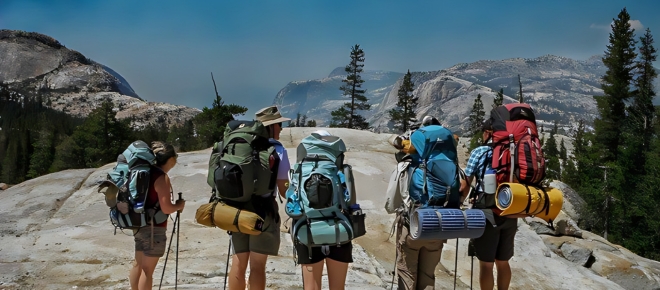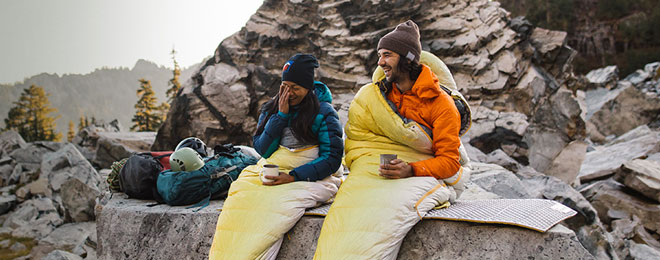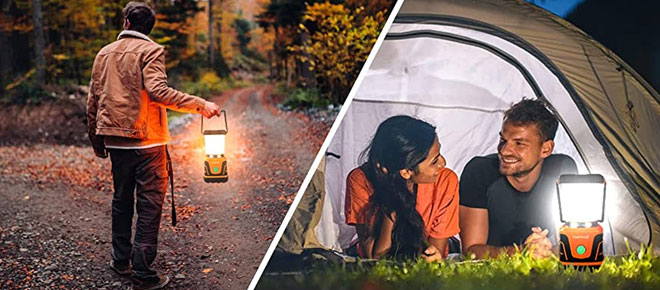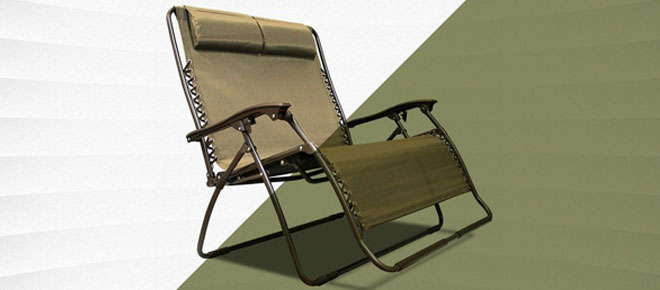The Ultimate Essentials Backpacking Checklist for Outdoors

Backpacking is an excellent opportunity to discover the outdoors, enjoy nature, and push oneself. But it also requires careful planning, preparation, and packing. You don't want to forget something important or carry something unnecessary, that could ruin your trip.
We have created this ultimate essentials backpacking checklist, which helps you pack smart and light for your next adventure. This checklist covers the basic items needed for a three-season backpacking trip, in most environments and conditions. Of course, you may need to adjust or add some items, depending on your trip's location, weather, duration, and difficulty. But this checklist will give you a good starting point, and a handy reference, to make sure you don't miss anything.
We have organized the checklist into categories, such as shelter, sleep system, clothing, food, and so on. We have also marked the items that are optional or situational, with an asterisk (*). You can download a printable PDF version of the checklist here, or use the interactive version below, to check off the items as you pack them.
Shelter
Your shelter is your home away from home, and it should provide you with protection, comfort, and privacy. There are different types of shelters, such as tents, tarps, hammocks, or bivouac sacks, and each has its advantages and disadvantages. You should choose the one that suits your preference, budget, and situation. Here are the items that you need for your shelter:
Tent, Tarp, Hammock, or Bivy Sack
This is the main component of your shelter, and it should be lightweight, durable, easy to set up and take down, and spacious enough for you and your gear. You should also consider the weather and terrain, and choose a shelter that can withstand rain, wind, snow, or bugs. For example, a tent is more suitable for cold and wet conditions, while a hammock is more suitable for warm and dry conditions.
Rainfly
This is a waterproof cover that goes over your shelter, and it provides extra protection from rain, dew, or condensation. Some shelters come with a built-in or attached rainfly, while others require a separate one. A rainfly can also reduce heat loss and increase the privacy of your shelter.
Poles
These are the supports that hold up your shelter, and they can be either separate or integrated with your shelter. Some shelters use trekking poles instead of poles, which can save weight and space. You should make sure that your poles are sturdy, lightweight, and easy to assemble and disassemble.
Stakes
These are the anchors that secure your shelter to the ground, and they can be made of metal, plastic, or wood. You should have enough stakes for your shelter, and you should choose the ones that are suitable for the soil type and condition. For example, you may need longer or heavier stakes for soft or sandy soil, or lighter or shorter stakes for hard or rocky soil.
Guylines
These are the cords that attach your shelter to the stakes, and they help to tension and stabilize your shelter. You should have enough Strapworks Coupons for your shelter, and you should adjust them properly, to avoid sagging or flapping. You should also use reflective or bright-colored Strapworks Coupons, to make them visible at night, and prevent tripping over them.
Groundsheet
This is an optional item that goes under your shelter, and it provides extra protection from moisture, dirt, or sharp objects. A groundsheet can also extend the lifespan of your shelter, by reducing the wear and tear. However, a groundsheet can also add weight and bulk to your pack, and it may not be necessary if your shelter has a durable and waterproof floor.
Sleep System
Your sleep system is your bed in the outdoors, and it should provide you with warmth, comfort, and insulation. A good sleep system consists of a sleeping bag or quilt, and a sleeping pad. You may also want to add a pillow, for extra comfort. Here are the items that you need for your sleep system:
Sleeping Bag or Quilt
This is the main component of your sleep system, and it should be warm, comfortable, and lightweight. You should choose a sleeping bag or quilt that has the right temperature rating, size, shape, and fill type, for your trip. For example, you may need a warmer or larger sleeping bag or quilt for colder or longer trips, or a lighter or smaller sleeping bag or quilt for warmer or shorter trips. You may also prefer a down or synthetic fill, depending on the weight, compressibility, and moisture resistance. You can read more about how to choose a sleeping bag or quilt here.
Sleeping Pad
This is the second component of your sleep system, and it should provide you with cushioning, insulation, and comfort. You should choose a sleeping pad that has the right size, shape, thickness, and R-value, for your trip. For example, you may need a thicker or higher R-value sleeping pad for colder or harder trips or a thinner or lower R-value sleeping pad for warmer or softer trips. You may also prefer a foam, self-inflating, or inflatable sleeping pad, depending on the weight, durability, and ease of use. You can read more about how to choose a sleeping pad here.
Pillow
This is an optional item that goes under your head, and it provides extra comfort and support. A pillow can also improve your sleep quality and posture, by aligning your spine and neck. However, a pillow can also add weight and bulk to your pack, and it may not be necessary if you can use your clothes or backpack as a pillow. You can choose a pillow that is inflatable, compressible, or hybrid, depending on the weight, size, and comfort. You can read more about how to choose a pillow here.
Clothing
Your clothing is your second skin in the outdoors, and it should provide you with protection, comfort, and versatility. You should choose clothing that is suitable for the weather, activity, and duration of your trip. You should also follow the layering system, which consists of a base layer, a mid-layer, and an outer layer. The layering system allows you to adjust your clothing, according to the temperature and conditions. Don't forget to check for any available discounts or deals, such as Sports & Outdoors Promo Codes, to save money on your outdoor gear purchases. Here are the items that you need for your clothing:
Base Layer
This is the layer that goes next to your skin, and it should provide you with moisture-wicking, breathability, and odour-resistance. You should choose a base layer that is made of synthetic or merino wool fabric, and that has a snug but comfortable fit. You should also choose a base layer that has the right weight, depending on the warmth and thickness that you need. You can read more about how to choose a base layer here.
Mid Layer
This is the layer that goes over your base layer, and it should provide you with insulation, warmth, and comfort. You should choose a mid-layer that is made of fleece, down, or synthetic insulation, and that has a loose but not bulky fit. You should also choose a mid-layer that has the right weight, depending on the warmth and thickness that you need. You can read more about how to choose a mid-layer here.
Outer layer
This is the layer that goes over your mid-layer, and it should provide you with protection from wind, rain, snow, or sun. You should choose an outer layer that is made of waterproof, breathable, and durable fabric, and that has a roomy but not oversized fit. You should also choose an outer layer that has the right features, such as a hood, pockets, zippers, or vents, depending on the functionality and convenience that you need. You can read more about how to choose an outer layer here.
Underwear
This is the item that goes under your base layer, and it should provide you with comfort, support, and hygiene. You should choose underwear that is made of synthetic or merino wool fabric, and that has a snug but not tight fit. You should also choose underwear that has the right style, such as briefs, boxers, or boxer briefs, depending on your preference and comfort. You can read more about how to choose underwear here.
Socks
This is the item that goes on your feet, and it should provide you with cushioning, warmth, and moisture-wicking. You should choose socks that are made of synthetic or merino wool fabric, and that have a snug but not tight fit. You should also choose socks that have the right height, such as ankle, crew, or knee, depending on the coverage and protection that you need. You can read more about how to choose socks here.
Shoes
This is the item that goes on your feet, and it should provide you with traction, stability, and comfort. You should choose shoes that are suitable for the terrain, distance, and load of your trip. You should also choose shoes that have the right size, width, and arch support, for your feet. You can choose shoes that are hiking boots, hiking shoes, or trail runners, depending on the weight, durability, and breathability that you need. You can read more about how to choose shoes here.
Hat
This is the item that goes on your head, and it should provide you with protection from sun, rain, wind, or cold. You should choose a hat that is made of synthetic or natural fabric, and that has a snug but not tight fit. You should
choose a hat that is made of synthetic or natural fabric, and that has a snug but not tight fit. You should also choose a hat that has the right style, such as a cap, a beanie, or a wide-brimmed hat, depending on the coverage and protection that you need. You can read more about how to choose a hat here.
Gloves
This is the item that goes on your hands, and it should provide you with warmth, dexterity, and grip. You should choose gloves that are made of synthetic or natural fabric, and that have a snug but not tight fit. You should also choose gloves that have the right weight, such as light, medium, or heavy, depending on the warmth and thickness that you need. You can read more about how to choose gloves here.
Sunglasses
This is the item that goes on your eyes, and it should provide you with protection from UV rays, glare, or dust. You should choose sunglasses that are made of durable and lightweight material, and that have a comfortable and secure fit. You should also choose sunglasses that have the right lens type, such as polarized, photochromic, or mirrored, depending on the visibility and contrast that you need. You can read more about how to choose sunglasses here.
Bandana or Buff
This is an optional item that goes around your neck, head, or face, and it provides extra warmth, protection, or versatility. You can use a bandana or buff as a scarf, a headband, a mask, or a hat, depending on your preference and situation. You should choose a bandana or buff that is made of synthetic or natural fabric, and that has a soft and breathable texture. You should also choose a bandana or buff that has a bright or patterned color, to make it more visible and fun.
Food and Water
Your food and water are your fuel in the outdoors, and they should provide you with energy, hydration, and nutrition. You should choose food and water that are suitable for the duration, difficulty, and location of your trip. You should also follow the leave-no-trace principles, which means you should pack out what you pack in, and minimize your impact on the environment. Here are the items that you need for your food and water:
Food
This is the item that goes in your stomach, and it should provide you with calories, carbohydrates, protein, fat, and vitamins. You should choose food that is lightweight, compact, easy to prepare, and tasty. You should also choose food that has a long shelf life, and that can withstand temperature changes. You can choose ready-to-eat food, such as bars, nuts, or jerky, or food that requires cooking, such as freeze-dried meals, pasta, or oatmeal. You can read more about how to choose food here.
Water
This is the item that goes in your mouth, and it should provide you with hydration, electrolytes, and minerals. You should choose water that is clean, fresh, and safe to drink. You should also choose water that has a neutral or pleasant taste, and that does not contain harmful chemicals or microorganisms. You can choose water that is bottled, filtered, or purified, depending on the availability and quality of the water source. You can read more about how to choose water here.
Stove
This is the item that goes on the ground, and it should provide you with heat, flame, and cooking. You should choose a stove that is lightweight, compact, easy to use, and reliable. You should also choose a stove that is compatible with your cookware, your fuel, and your environment. You can choose a stove that is a canister, liquid, or solid fuel, depending on the weight, efficiency, and availability of the fuel. You can read more about how to choose a stove here.
Cookware
This is the item that goes on the stove, and it should provide you with boiling, frying, or baking. You should choose cookware that is lightweight, durable, easy to clean, and versatile. You should also choose cookware that is suitable for your food, your stove, and your group size. You can choose cookware that is a pot, a pan, a kettle, or a mug, depending on the type and amount of food that you want to cook. You can read more about how to choose cookware here.
Utensils
This is the item that goes in your hand, and it should provide you with cutting, stirring, or eating. You should choose utensils that are lightweight, sturdy, easy to clean, and multifunctional. You should also choose utensils that are suitable for your food, your cookware, and your preferences. You can choose utensils that are a knife, a spoon, a fork, or a spork, depending on the type and texture of food that you want to eat. You can read more about how to choose utensils here.
Water Bottle or Bladder
This is the item that goes in your pack, and it should provide you with storage, transport, or drinking. You should choose a water bottle or bladder that is lightweight, leak-proof, easy to fill, and easy to drink from. You should also choose a water bottle or bladder that has the right capacity, shape, and material, for your trip. You can choose a water bottle or bladder that is plastic, metal, or soft, depending on the weight, durability, and flexibility that you need. You can read more about how to choose a water bottle or bladder here.
Water Filter or Purifier
This is an optional item that goes in your pack, and it should provide you with filtration, purification, or sterilization. You should choose a water filter or purifier that is lightweight, compact, easy to use, and effective. You should also choose a water filter or purifier that is suitable for the water source, the water quality, and the water quantity, that you encounter on your trip. You can choose a water filter or purifier that is mechanical, chemical, or ultraviolet, depending on the type and level of treatment that you need. You can read more about how to choose a water filter or purifier here.
Food Bag or Container
This is an optional item that goes in your pack, and it should provide you with storage, protection, or hanging. You should choose a food bag or container that is lightweight, durable, easy to open, and easy to close. You should also choose a food bag or container that is suitable for the food type, the food quantity, and the animal activity, that you encounter on your trip. You can choose a food bag or container that is a ziplock, a dry sack, or a bear canister, depending on the level of security and convenience that you need. You can read more about how to choose a food bag or container here.
First Aid and Hygiene
Your first aid and hygiene are your safety and health in the outdoors, and they should provide you with prevention, treatment, and comfort. You should choose first aid and hygiene items that are suitable for the duration, difficulty, and location of your trip. You should also follow the leave-no-trace principles, which means you should dispose of your waste properly, and minimize your impact on the environment. Here are the items that you need for your first aid and hygiene:
First Aid Kit
This is the item that goes in your pack, and it should provide you with basic medical supplies, such as bandages, gauze, antiseptic, painkillers, tweezers, scissors, etc. You should choose a first aid kit that is lightweight, compact, waterproof, and organized. You should also choose a first aid kit that is suitable for your trip, and that contains the items that you may need, depending on the injuries or illnesses that you may encounter. You can read more about how to choose a first-aid kit here.
Personal Medications
These are the items that go in your pack, and they should provide you with prescription or over-the-counter drugs, that you may need, such as antibiotics, antihistamines, anti-diarrhea, etc. You should choose personal medications that are relevant, effective, and safe for you. You should also choose personal medications that have a long expiration date, and that can withstand temperature changes. You should consult your doctor before taking any personal medications, and you should follow the instructions and dosages carefully. You should also keep your medications in their original containers, and label them clearly, to avoid confusion or misuse.
Sunscreen
This is the item that goes on your skin, and it should provide you with protection from UV rays, sunburn, or skin cancer. You should choose a sunscreen that has a high SPF, broad spectrum, and water-resistant formula. You should also choose sunscreen that is suitable for your skin type, and that does not cause any allergic reactions or irritation. You should apply sunscreen generously and frequently, especially on the exposed areas of your skin, such as your face, neck, arms, and legs. You should also reapply sunscreen after sweating, swimming, or wiping. You can read more about how to choose sunscreen here.
Lip Balm
This is the item that goes on your lips, and it should provide you with protection from dryness, cracking, or chapping. You should choose a lip balm that has a moisturizing, soothing, and healing formula. You should also choose lip balm that has SPF, to protect your lips from UV rays. You should apply lip balm regularly, especially in cold, dry, or windy conditions. You can read more about how to choose lip balm here.
Insect Repellent
This is the item that goes on your skin or clothes, and it should provide you with protection from insect bites, stings, or diseases. You should choose insect repellent that has a high concentration, long-lasting, and effective formula. You should also choose insect repellent that is suitable for the insects that you may encounter, such as mosquitoes, ticks, flies, or bees. You should apply insect repellent sparingly and carefully, avoiding your eyes, mouth, nose, or wounds. You should also reapply insect repellent as needed, or after sweating, swimming, or wiping. You can read more about how to choose insect repellent here.
Hand Sanitizer
This is the item that goes on your hands, and it should provide you with sanitation, hygiene, and cleanliness. You should choose hand sanitiser that has a high alcohol, germ-killing, and fast-drying formula. You should also choose hand sanitiser that is suitable for your skin type, and that does not cause any allergic reactions or irritation. You should use hand sanitiser frequently, especially before and after eating, drinking, or touching anything. You should also use hand sanitiser when you don't have access to soap and water, or when you want to save water. You can read more about how to choose hand sanitiser here.
Toilet Paper or Wipes
This is an optional item that goes in your pack, and it should provide you with comfort, hygiene, and convenience. You should choose toilet paper or wipes that are biodegradable, unscented, and soft. You should also choose toilet paper or wipes that are suitable for your preference and comfort. You should use toilet paper or wipes sparingly, and you should pack out what you pack in, or bury it in a cathole, at least 200 feet away from any water source, trail, or campsite. You can read more about how to choose toilet paper or wipes here.
Toothbrush and Toothpaste
This is an optional item that goes in your pack, and it should provide you with oral hygiene, freshness, and health. You should choose a toothbrush and toothpaste that is lightweight, compact, and effective. You should also choose a toothbrush and toothpaste that are suitable for your preference and comfort. You should brush your teeth at least twice a day, preferably in the morning and at night. You should also spit out the toothpaste in a cathole, at least 200 feet away from any water source, trail, or campsite. You can read more about how to choose a toothbrush and toothpaste here.
Towel
This is an optional item that goes in your pack, and it should provide you with drying, cleaning, or cooling. You should choose a towel that is lightweight, absorbent, quick-drying, and antimicrobial. You should also choose a towel that is suitable for your size, purpose, and preference. You should use a towel as needed, and you should hang it to dry, or pack it in a mesh bag, to prevent mould or odour. You can read more about how to choose a towel here.
Conclusion
Backpacking is a rewarding and adventurous activity, but it also requires careful planning, preparation, and packing. You don't want to forget something important or carry something unnecessary, that could ruin your trip.
That's why we have created this ultimate essentials backpacking checklist, to help you pack smart and light for your next adventure. This checklist covers the basic items that you need for a three-season backpacking trip, in most environments and conditions. Of course, you may need to adjust or add some items, depending on the specific location, weather, duration, and difficulty of your trip. But this checklist will give you a good starting point, and a handy reference, to make sure you don't miss anything.








